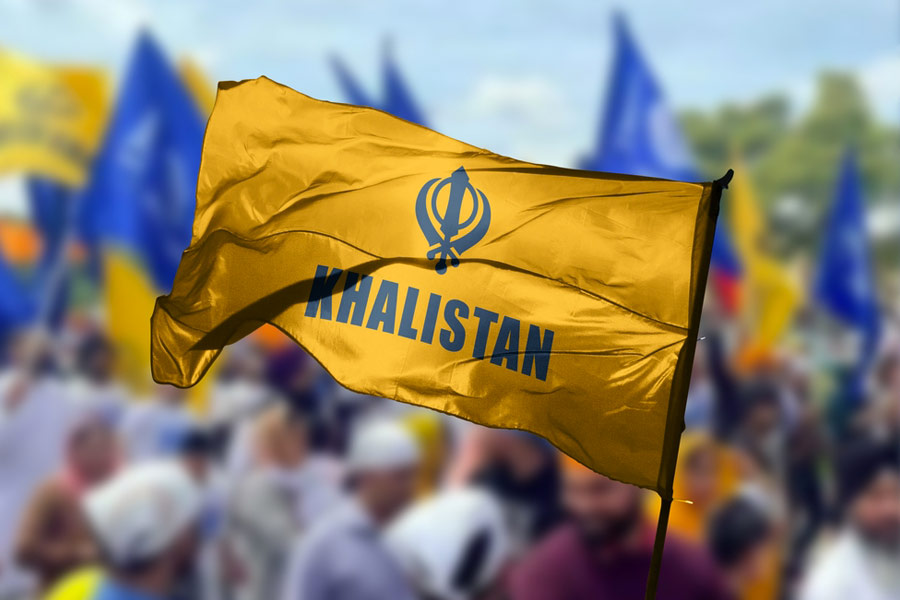The Khalistan Movement is a significant chapter in modern Sikh history. Emerging from political, social, and religious pressures, it represents the desire for a separate Sikh state, Khalistan, primarily in the Indian state of Punjab. This movement has been a source of intense debate and has had lasting consequences, shaping the relationship between the Sikh community and the Indian government. To understand the Khalistan Movement’s evolution, it’s essential to explore its roots, the key events that propelled it forward, and the present-day impact of the Khalistan referendum and the Khalistan population.
The Origins of the Khalistan Movement
The desire for a separate Sikh homeland has deep roots, dating back to the partition of India in 1947. The partition resulted in widespread violence, with Punjab being split into Indian and Pakistani territories. The displacement and suffering of Sikhs during this period, along with perceived marginalization within India, laid the groundwork for the Khalistan Movement.
In the early stages, the movement was largely cultural and political, advocating for greater autonomy for Sikhs. However, by the 1970s, this sentiment intensified. The rise of Sikh militancy during this period was partly fueled by the perception that Sikhs were being neglected in political decisions. The Khalistan referendum emerged as a direct call for a separate Sikh state, where the Sikh community could have full control over their religious, cultural, and political affairs.
The Khalistan Referendum: A Step Towards Independence
The Khalistan referendum is perhaps one of the most contentious aspects of the Khalistan Movement. In the 1980s, following Operation Blue Star—an Indian military operation in the Golden Temple aimed at removing militants—calls for a separate state became louder. The referendum was proposed as a democratic method for Sikhs to voice their desire for independence. However, it has been met with resistance both within India and internationally.
The Khalistan referendum is not only about sovereignty but also a means of reclaiming what many Sikhs believe was lost during the tumultuous years following independence. Despite the challenges and the violence that occurred during the 1980s, the referendum remains a powerful symbol of the struggle for Sikh identity and autonomy. While the referendum has not gained widespread political support in India, it continues to resonate with a large portion of the diaspora.
The Role of the Khalistan Population in the Movement
A key component in understanding the Khalistan Movement is the Khalistan population. The population of Sikhs worldwide plays a critical role in the movement’s longevity and influence. The majority of Sikhs who support Khalistan are not just located in India, but are spread across the globe, with significant populations in countries like the UK, Canada, the US, and Australia. The Khalistan population in these regions has played an essential role in lobbying for the recognition of Khalistan and drawing attention to issues related to Sikh rights and autonomy.
In addition, the diaspora’s access to platforms in international politics has allowed the Khalistan Movement to gain traction beyond the borders of India. Proponents argue that the global Khalistan population is vital in ensuring that the movement remains relevant in the contemporary political discourse. Although the numbers may be disputed, the impact of this community cannot be underestimated.
Key Events Shaping the Khalistan Movement
Several key events have shaped the course of the Khalistan Movement, with some of the most notable being Operation Blue Star, the assassination of Prime Minister Indira Gandhi, and the 1984 anti-Sikh riots. Each of these events intensified the call for an independent Khalistan and solidified the movement’s stance among many Sikhs.
Operation Blue Star in 1984 was particularly critical in shaping the public perception of the movement. The attack on the Golden Temple, which houses the holiest shrine of Sikhism, resulted in the deaths of many militants and civilians, but it also deepened the divide between Sikhs and the Indian government. Following the operation, the violence and injustice faced by Sikhs were seen by many as a reflection of their disenfranchisement within India, fueling greater calls for a separate homeland.
The aftermath of these events, particularly the Khalistan referendum, brought attention to the demand for a political solution to the Sikh community’s grievances. Even though the political and military climate has shifted since the 1980s, the events of that era remain central to the movement’s legacy.
The Future of the Khalistan Movement
While the Khalistan Movement has faced considerable opposition, its influence is far from over. The modern-day movement has evolved, with some factions advocating for peaceful negotiations and others calling for direct action. The Khalistan referendum continues to be a divisive issue, with debates about its feasibility and relevance in today’s India. As the Khalistan population continues to grow, both in India and the diaspora, the movement’s future remains uncertain but deeply significant.
Supporters argue that a peaceful resolution can be reached by addressing the grievances of the Sikh community and recognizing their cultural and religious needs. However, critics argue that the vision of Khalistan is unrealistic, given the modern geopolitical and social realities.
Conclusion
The Khalistan Movement is a complex, multifaceted struggle that encompasses both historical grievances and contemporary aspirations. From its origins in the aftermath of the partition of India to its rise as a movement seeking a separate Sikh state, it remains a topic of significant importance within Sikh politics and identity. The Khalistan referendum serves as a reminder of the unresolved issues surrounding Sikh autonomy, while the Khalistan population continues to advocate for recognition and justice on the world stage. While the movement’s future is uncertain, its legacy continues to inspire and challenge political discourse, both in India and abroad.









